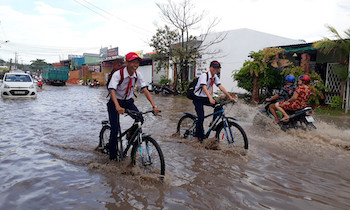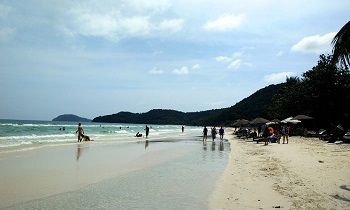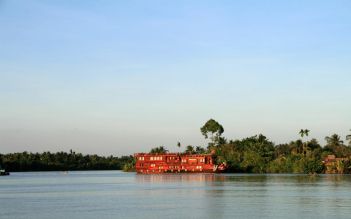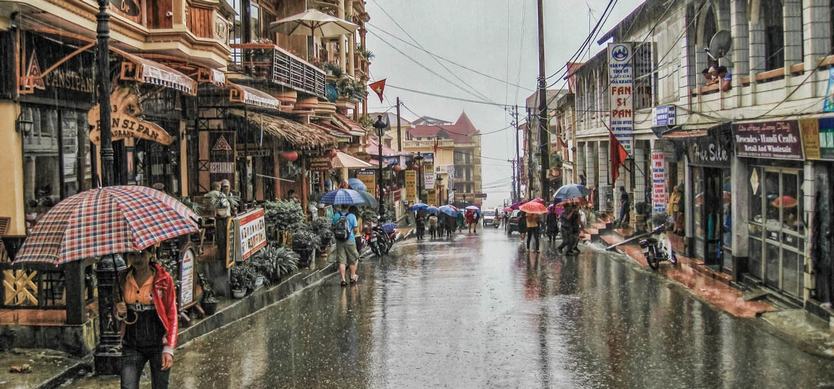
When Is Monsoon Season In Vietnam?
For a good Vietnam highlights tour, it is necessary to consider the weather of the destination. The weather in Vietnam is different from time to time and from region to region. This article will provide you with more information about the monsoon season in Vietnam and help you to answer the question: When is the monsoon season in Vietnam?
Characteristics of monsoon in Vietnam
The year-round tropical climate provides Vietnam with a great source of heat. On average, each square kilometer of land receives over one million kilos of calories; the number of sunshine hours per year ranges from 1400 to 3000. The average temperature in the air exceeds 21 degrees across the country, from north to south.
There are two monsoon seasons: cold and dry northeast monsoon (winter); hot and humid southwest monsoon (summer).
The monsoon brings heavy rainfall (1500 to 2000 mm per year) and very high humidity (over 80%).

Hanoi street after rain
Impact and process
Northeast monsoon
- Origin: the cold air flows from Siberia high-pressure center to Vietnam
- Wind direction: Northeast - Southwest
- Operation time: from November to April
- The scope of activities: from the latitude of 60 to the north
- Characteristics:
At the beginning of winter (November, December, and January): Aleut low pressure absorbs the cold air flowing from Siberia high pressure, which is being in the center of Asia-Europe, blowing across the continent. This wind brings cold and dry weather to North Vietnam.
In the second half of winter, Siberia high-pressure shifts to the east, Aleut low pressure weaken. Instead, Australia low pressure acts more strongly and absorbs the wind from Siberia high pressure. This wind blows through the sea before entering the mainland; therefore, it carries the moisture from the sea, causing the Vietnam weather in the coastal area and the lowland of North Vietnam to be cold and humid.
The northeast monsoon is only active in waves; the wind power becomes the strongest in winter. The winter of the north lasts for 2 to 3 months. As it moves toward the south, this wind weakens by Bach Ma mountain.
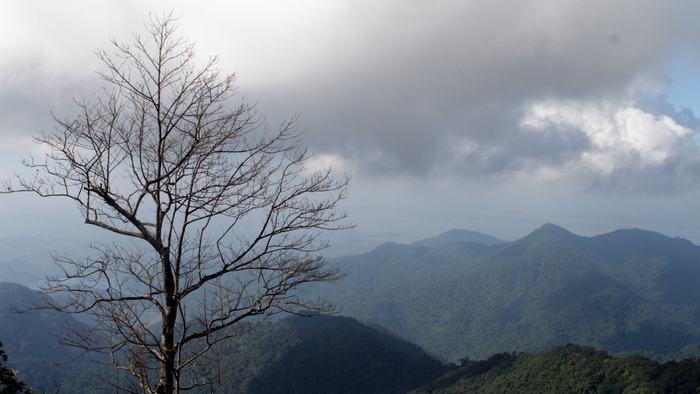
Bach Ma Mountain
Southwest monsoon
- Origin: starts from India - Myanmar low-pressure center, from the Northern Indian Ocean through the Bengan Bay to Vietnam
- Wind direction: Southwest
- Operation time: from May to October
- Characteristics
In early summer, the humid tropical air from the Northern Indian Ocean, moving in the direction of the Southwest directly penetrates and causes heavy rainfall to the Southern Delta and the Central Highlands. Besides, when going through the Annamite Range, it creates foehn conditions for the North Central and the north of Southwest with the hot, dry weather.
In the mid and late summer (from June): Southwest monsoon goes from the subtropical high pressure of Southern Hemisphere. When crossing the equatorial sea, this air becomes hotter and damper, causing heavy and prolonged rain for the wind prone area in the South and Central Highlands. Also, the tropical convergence zone causes heavy rain for both the South and the North in June and the Central region in September.
In the North, because of the low pressure in the North, this air moves in the direction of Southeast toward North, creating the Southeast monsoon in summer in northern Vietnam.
We hope that this article is useful to you. To get more about famous destinations in Vietnam, you can visit our website. Do not hesitate to contact us if you have any questions. Share this article with others if you find it helpful. Thank you!





